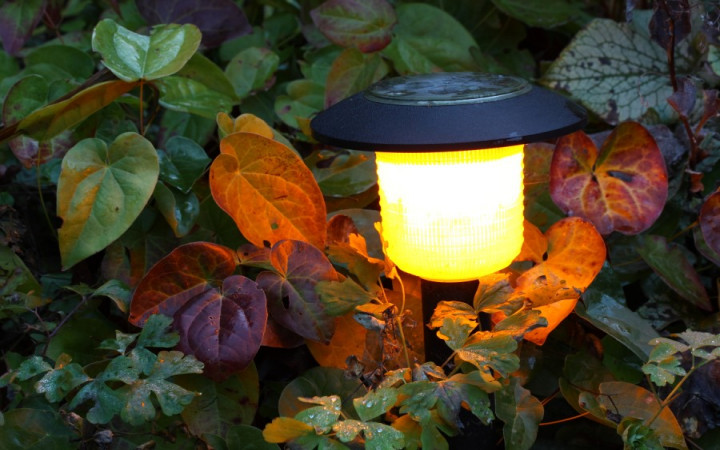Many years ago, the thought of powering lights by harnessing the power of the Sun sounded like science fiction. Today, though, you can see solar panels dotting the rooftops of buildings and houses, as well as street lights in some cities.
What was once a dream has become reality, In fact, you might even have solar power at your fingertips in the form of a solar-powered calculator. If you have a garden or landscaping at home, you might even have solar-powered lights guiding your path at night.
Have you ever stopped to WONDER exactly how these affordable solar lights convert the Sun's rays into electricity to power lights that shine for hours after the Sun goes down? Is it magic? Nope! It's science!
Solar lights work because of the photovoltaic effect. The most important part of a solar light is the photovoltaic or solar cell. The solar cell is the part that converts sunlight into direct electrical current. You can clearly see the solar cell as a dark panel at the top of a solar light.
A solar cell consists of multiple layers of crystalline silicone and chemicals that create layers of negatively-charged electrons and positively-charged spaces. As sunlight passes through the solar cell, it excites the negatively-charged electrons and pushes them into the positively-charged spaces.
The positively-charged spaces then transfer the electron stream as a direct current of electricity through wires into the solar cell to a battery where the electricity is stored until it's needed. The battery charges throughout the day as sunlight continues to be converted to electricity.
When evening approaches, the solar cell stops converting sunlight as it weakens and eventually disappears. A photoreceptor on the light detects when it's dark and turns on the light, which is usually made up of several light-emitting diodes (LEDs). The battery then supplies electricity to the light throughout the night.
This process repeats on a daily cycle. During the day, sunlight is converted to electricity and stored in the battery. At night, the battery supplies the electricity to the light until it is all used up or the photoreceptor shuts off the light as daylight reappears.
Of course, adequate sunlight is necessary to charge the battery fully. During the summer, this shouldn't be a problem as long as the light is placed where it can receive direct sunlight for most of the day. If possible, make sure no trees or bushes create shade that could affect the charging of the solar light.
During the winter, however, a solar light might not be able to receive enough sunlight to charge the battery sufficiently to stay lit all night. This occurs because in winter nights are longer and days are shorter, resulting in fewer hours of sunlight to charge the battery. In addition, wintertime often brings snow, which can block the solar cell and prevent charging during the day.




